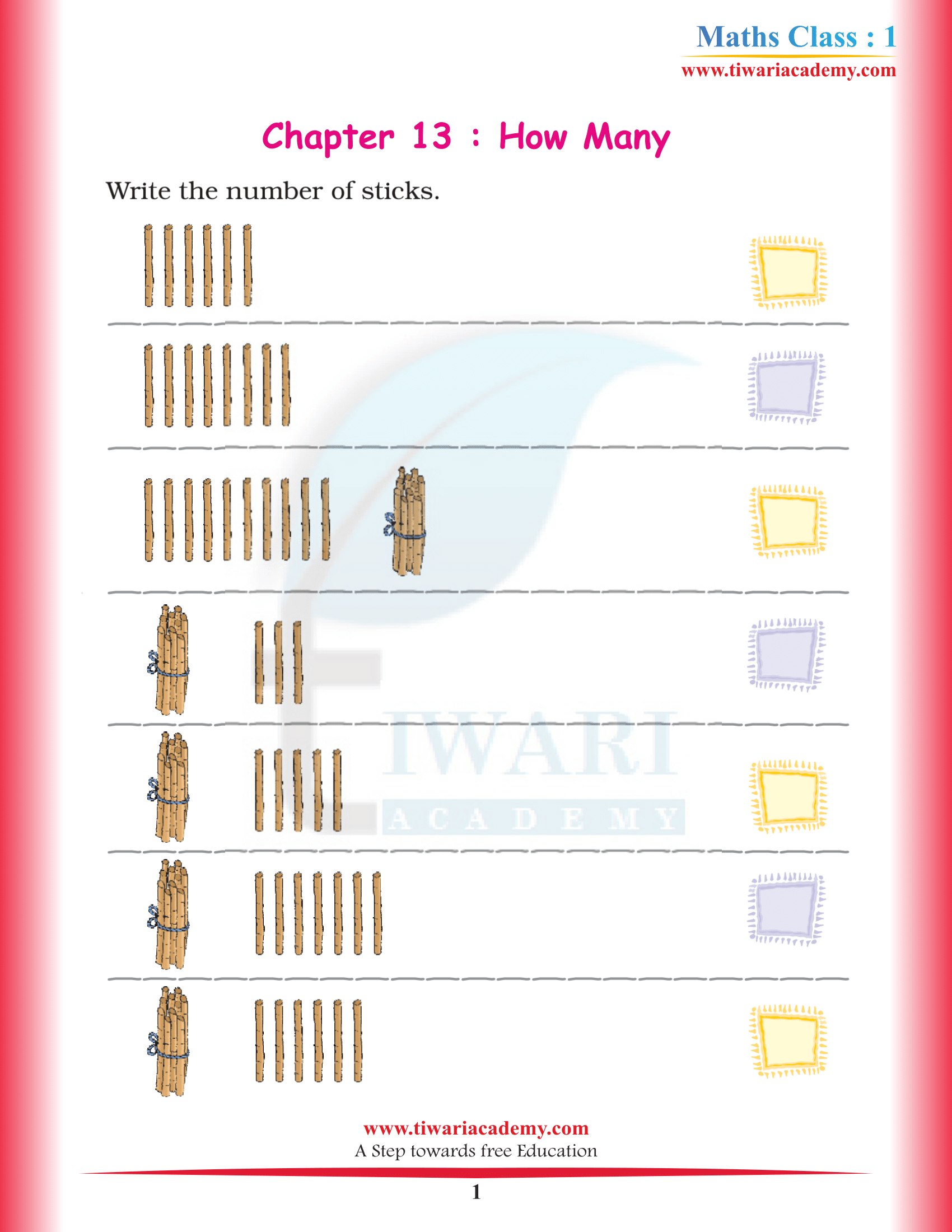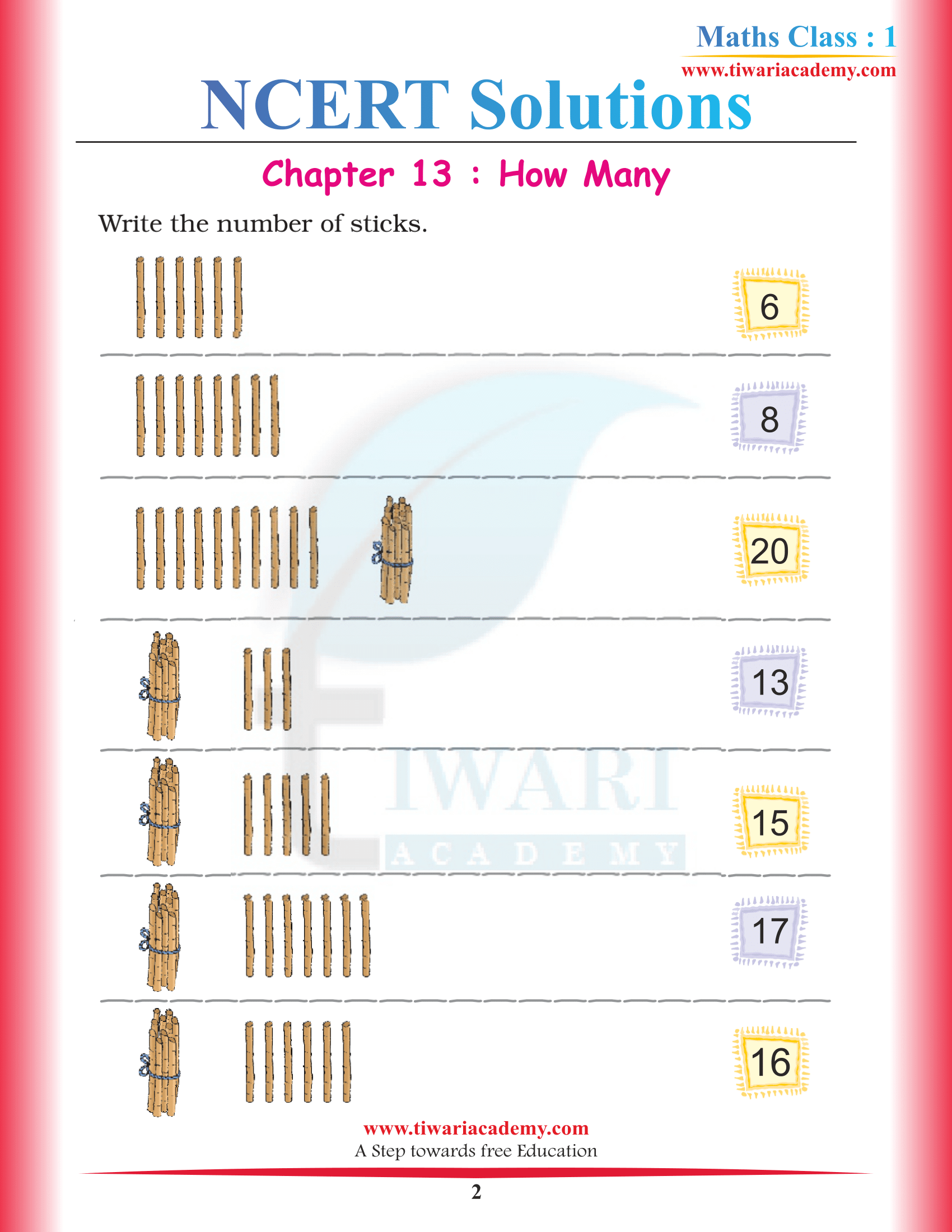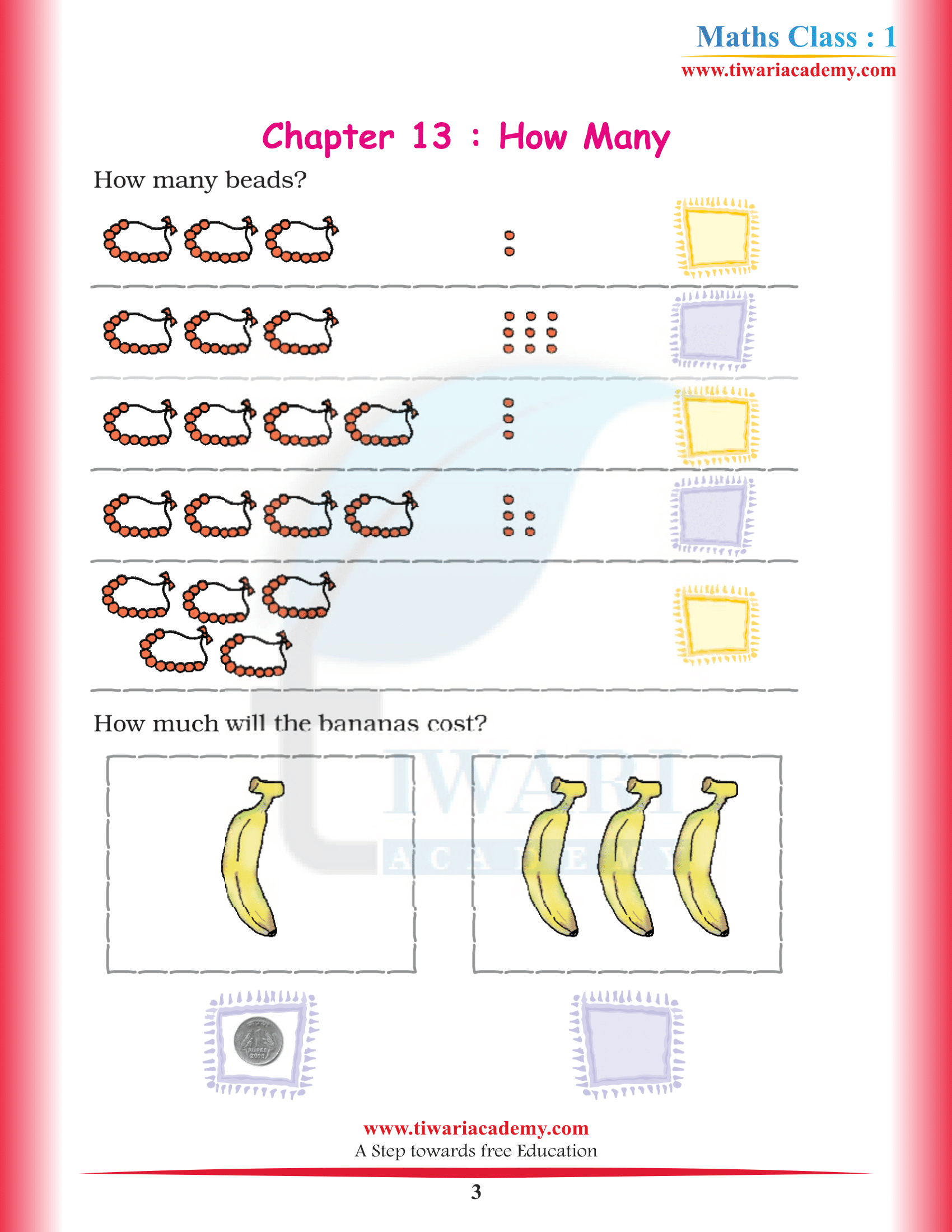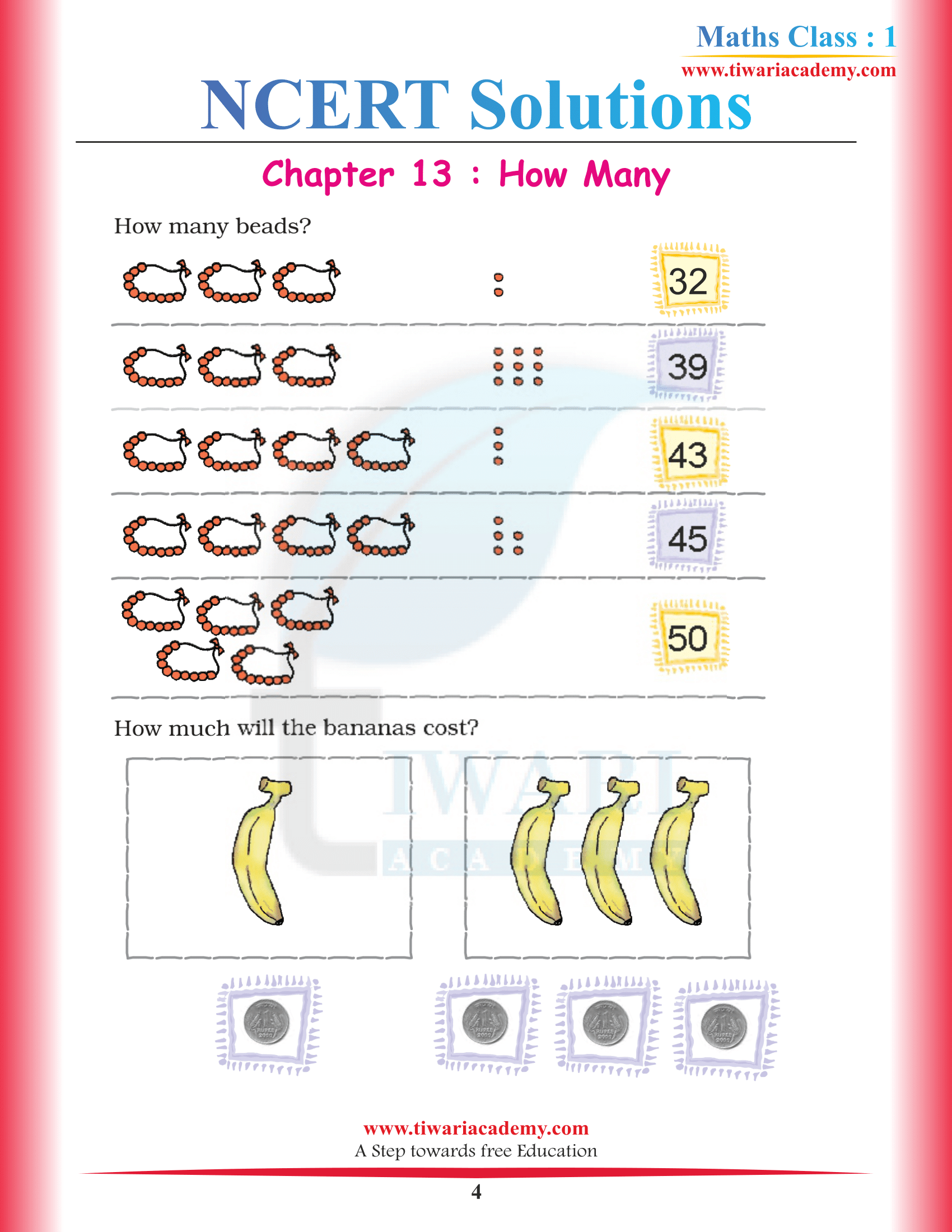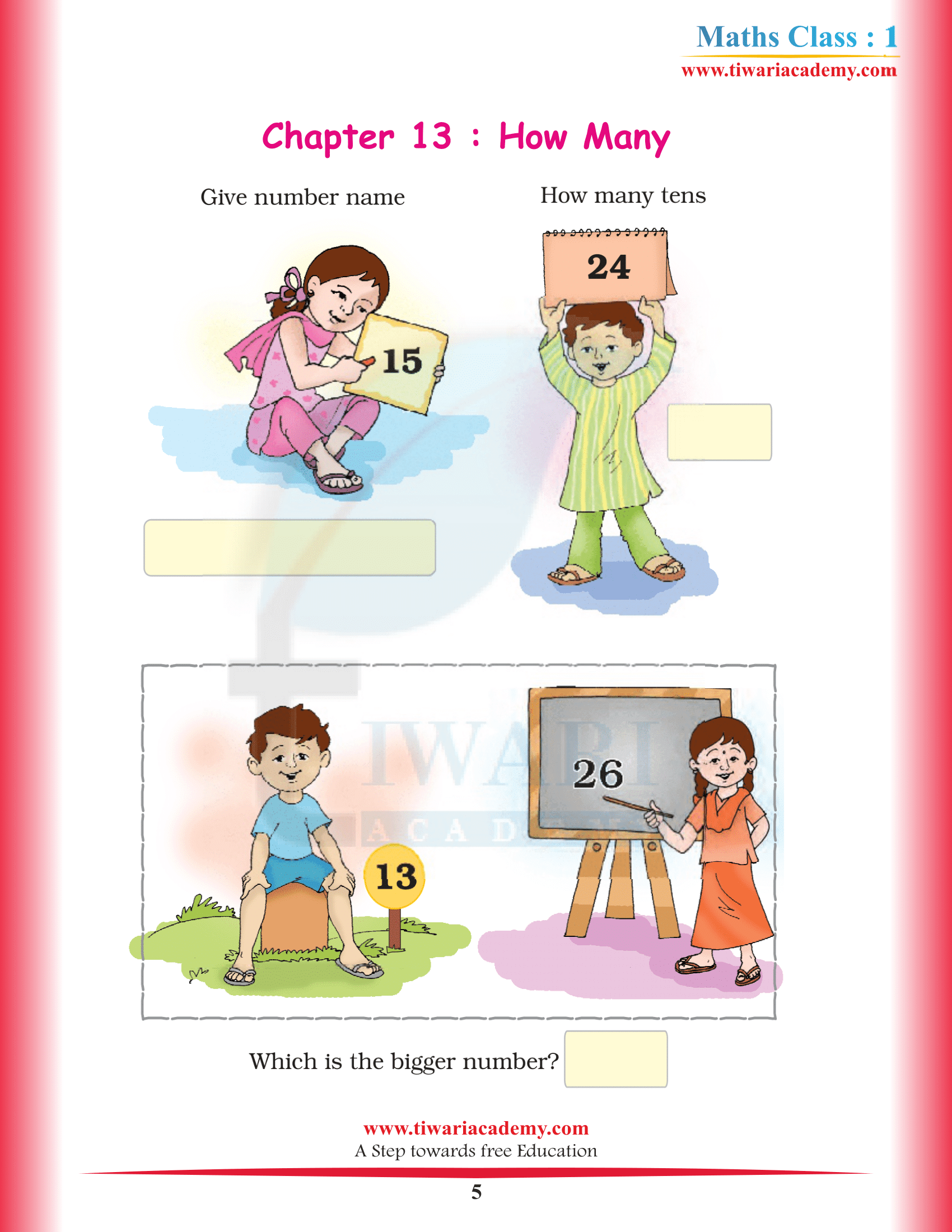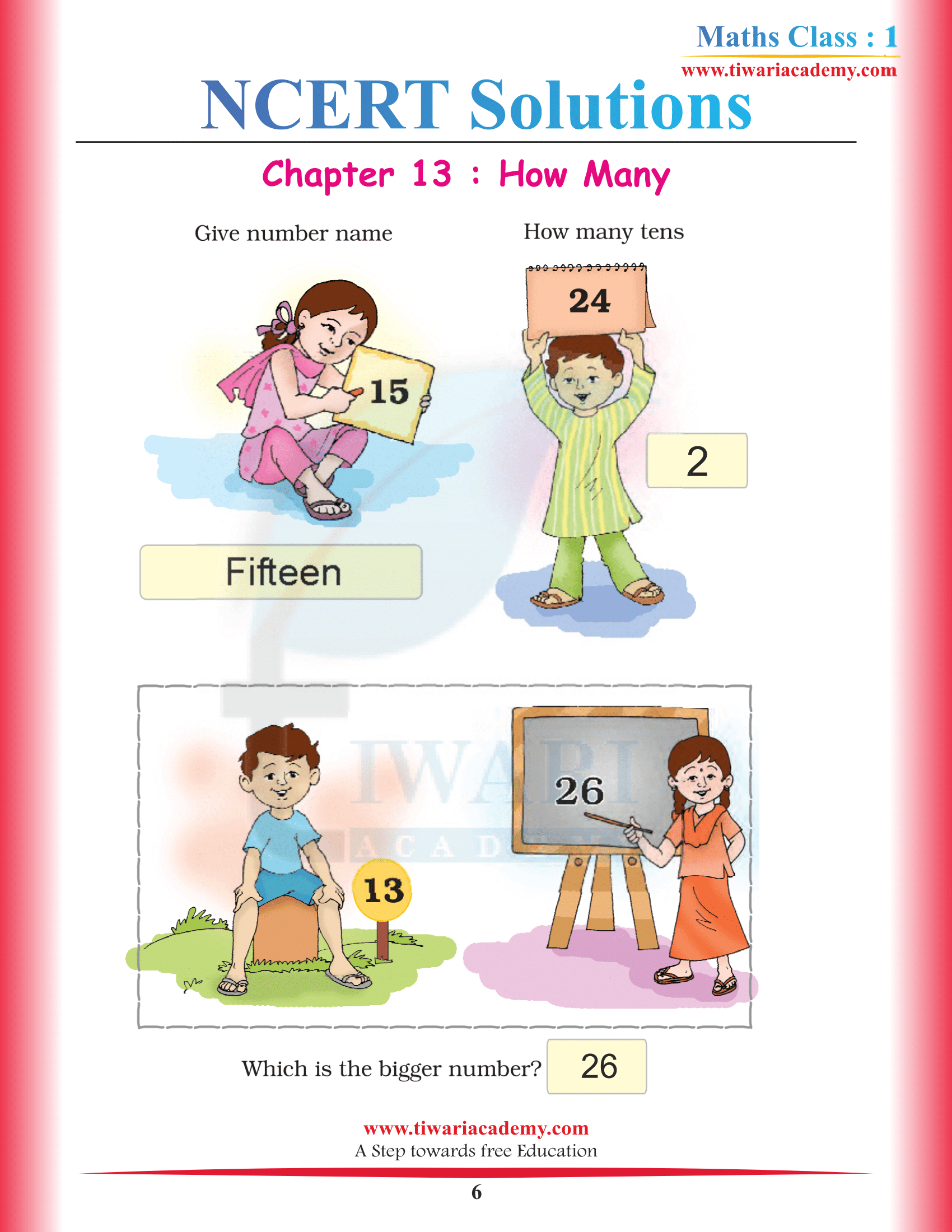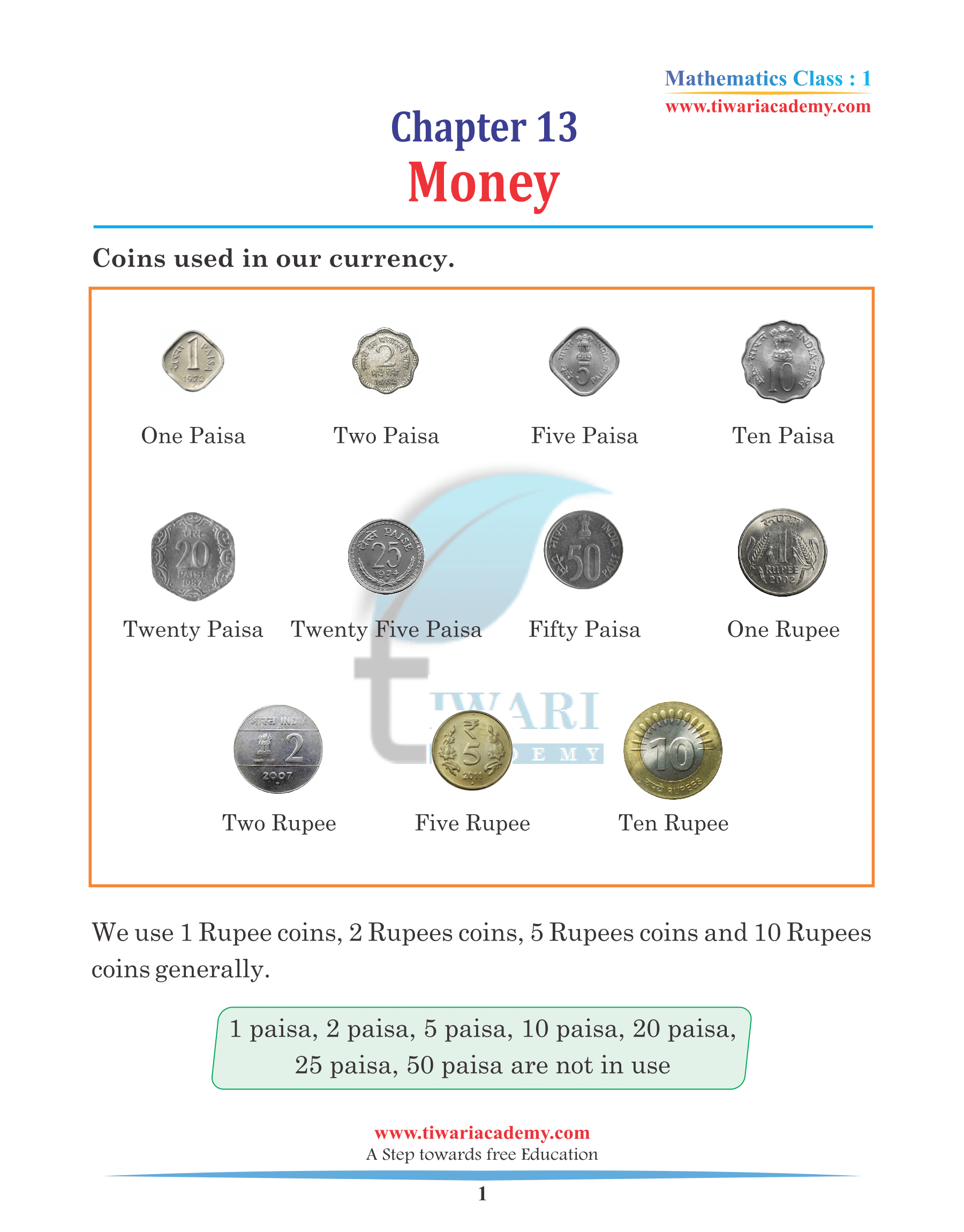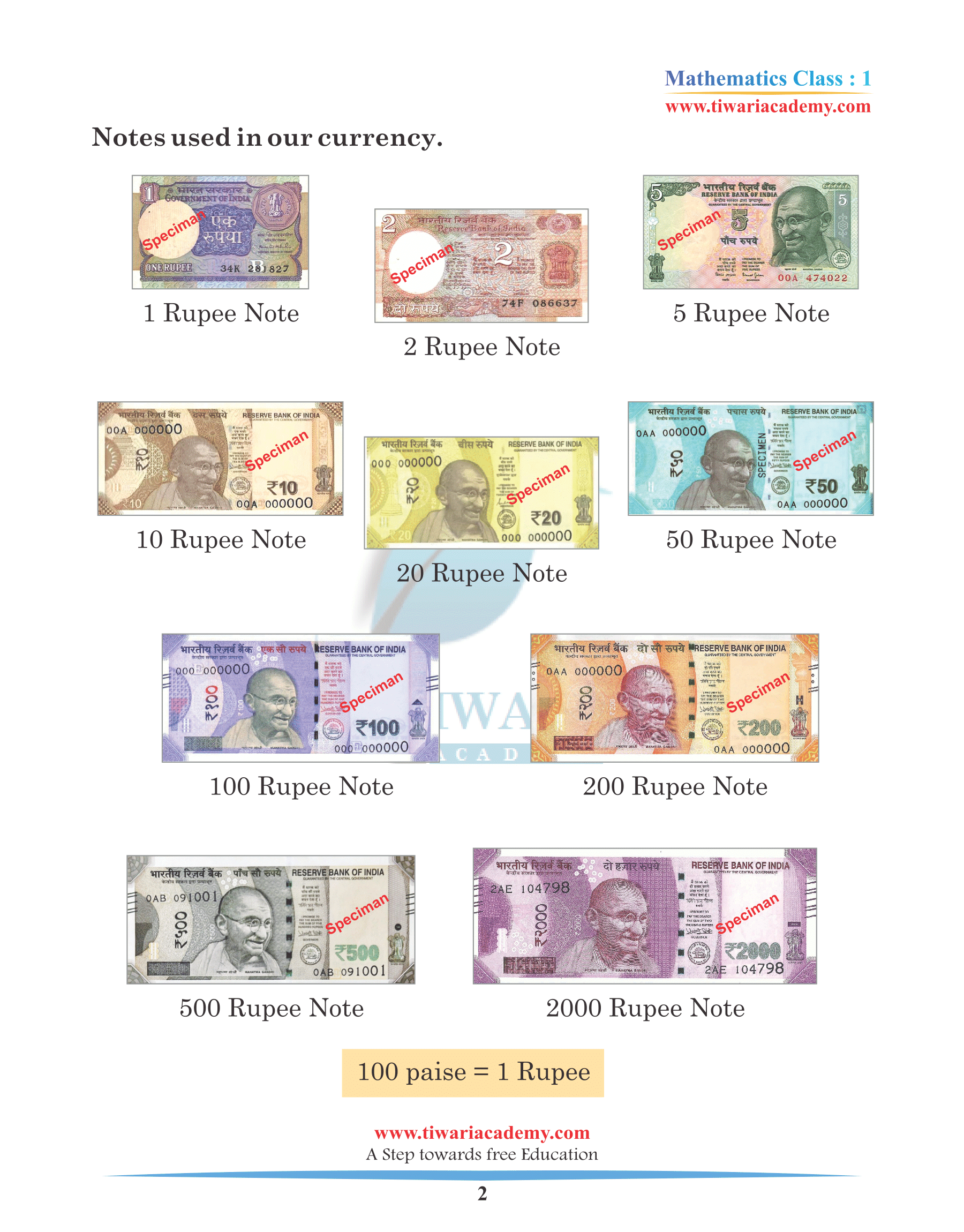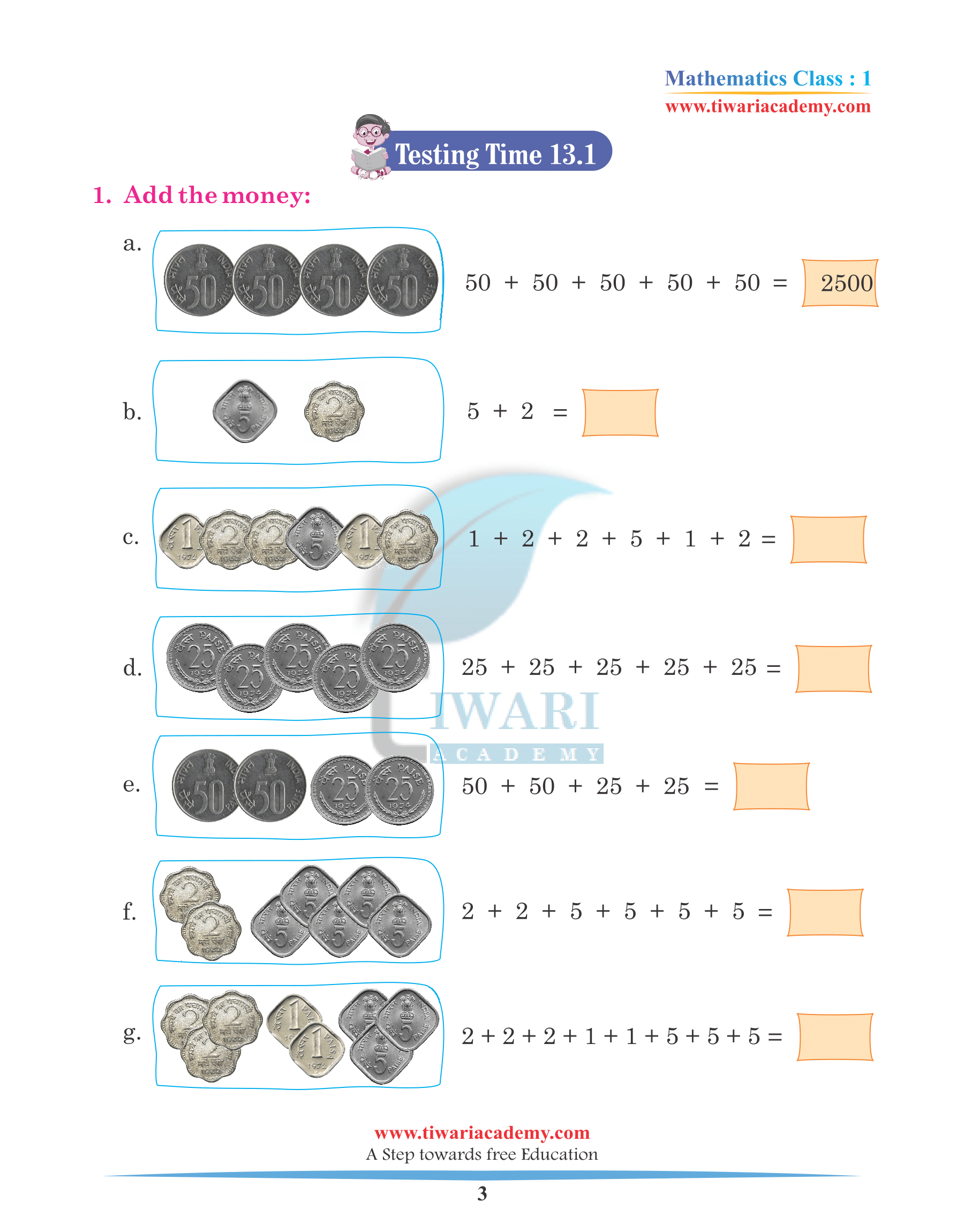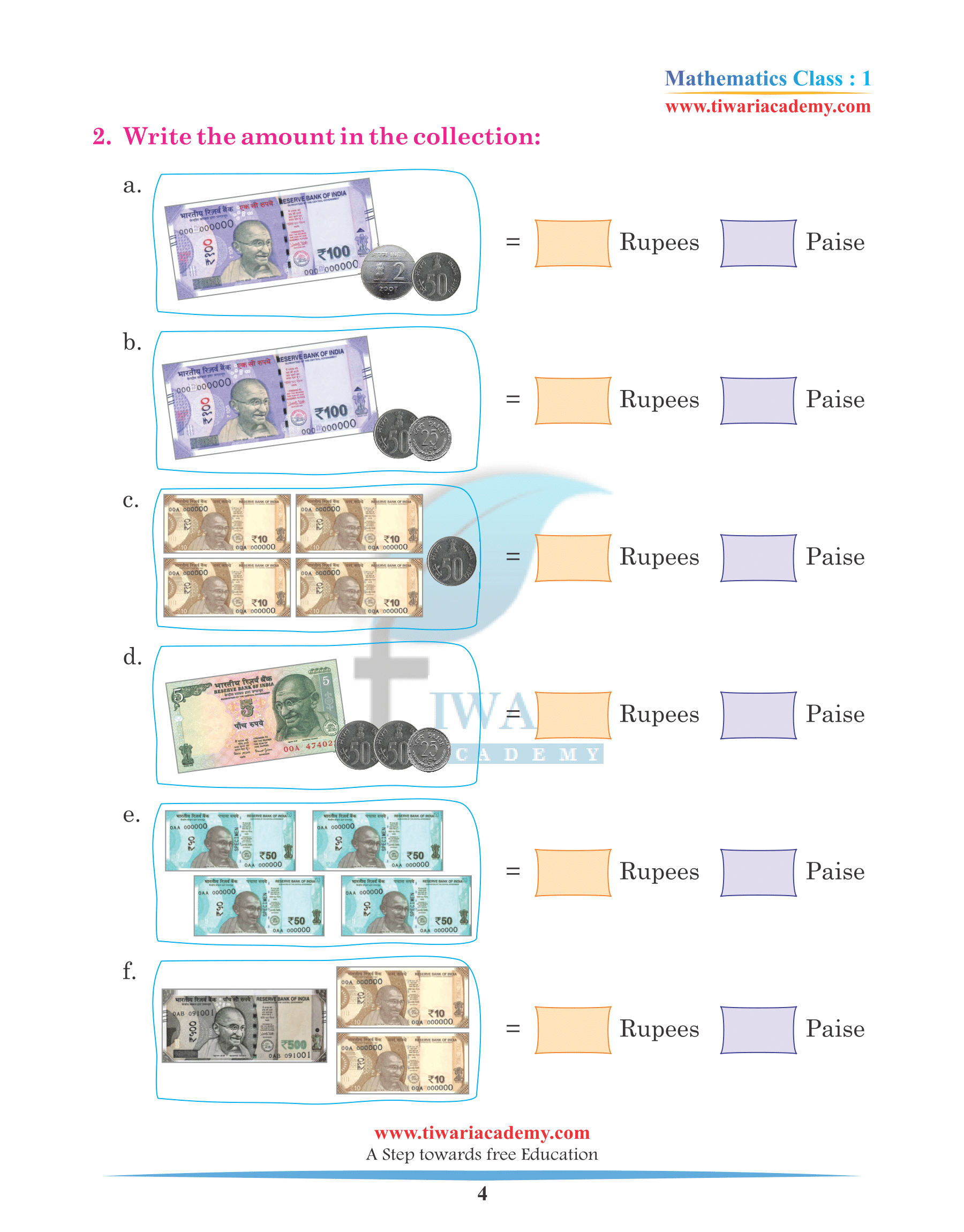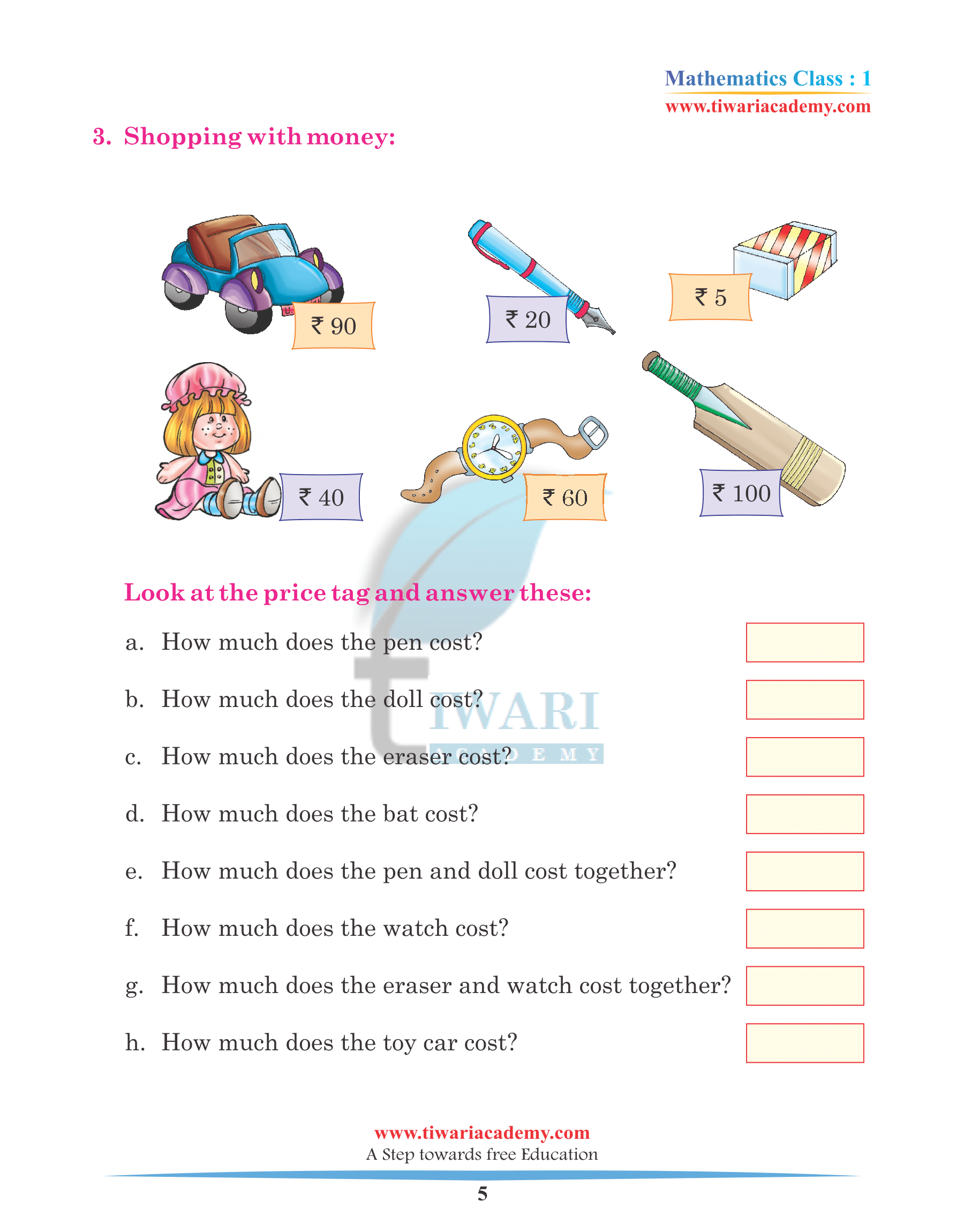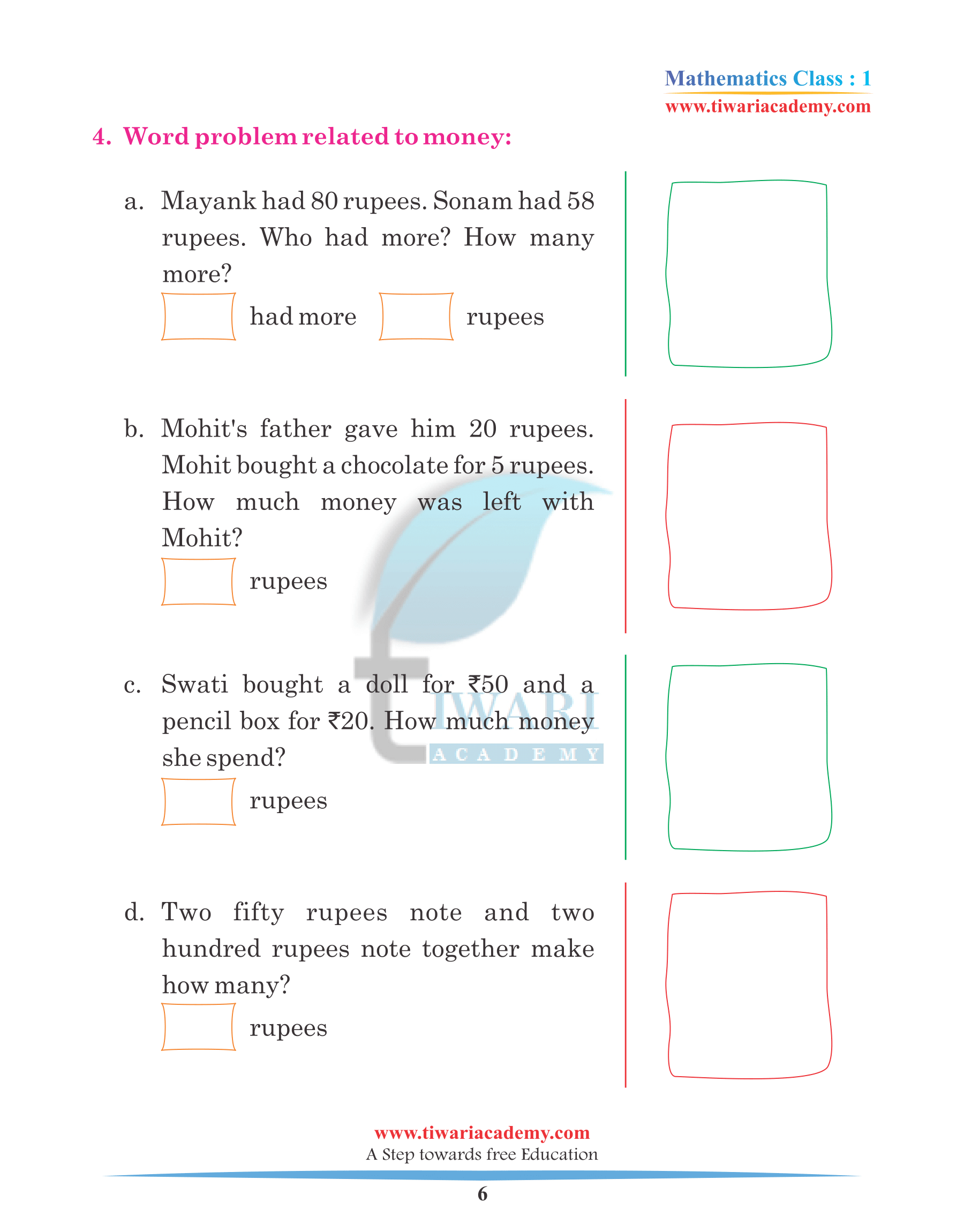NCERT Solutions for Class 1 Maths Chapter 13 How Many in Hindi and English Medium question answers and explanation of each question given in exercises or intext pages. All the solutions for grade 1 Maths are updated for new academic session 2025-26. A revision book is also given here which help the students during revision of the chapters for exams or class tests.
Class 1 Maths Chapter 13 How Many
Class 1 Maths Chapter 13, How Many? helps strengthen the foundational skills of arithmetic by bridging the gap between real-world objects and numerical symbols.
NCERT Solutions for Class 1 Maths Chapter 13
Students start with direct counting of tangible items like fruits, toys, and classroom objects. This hands-on approach helps them correlate the actual number of items with the corresponding numerical value, reinforcing their counting skills.
After counting objects, students transition to representing that count with written numbers. This is crucial in helping them understand the abstract nature of numbers as symbols that represent quantities. Beyond just counting, students are taught to compare groups of objects to determine which group has more, which has less, or if the groups are equal. This paves the way for concepts of greater than, less than, and equal to in subsequent lessons.
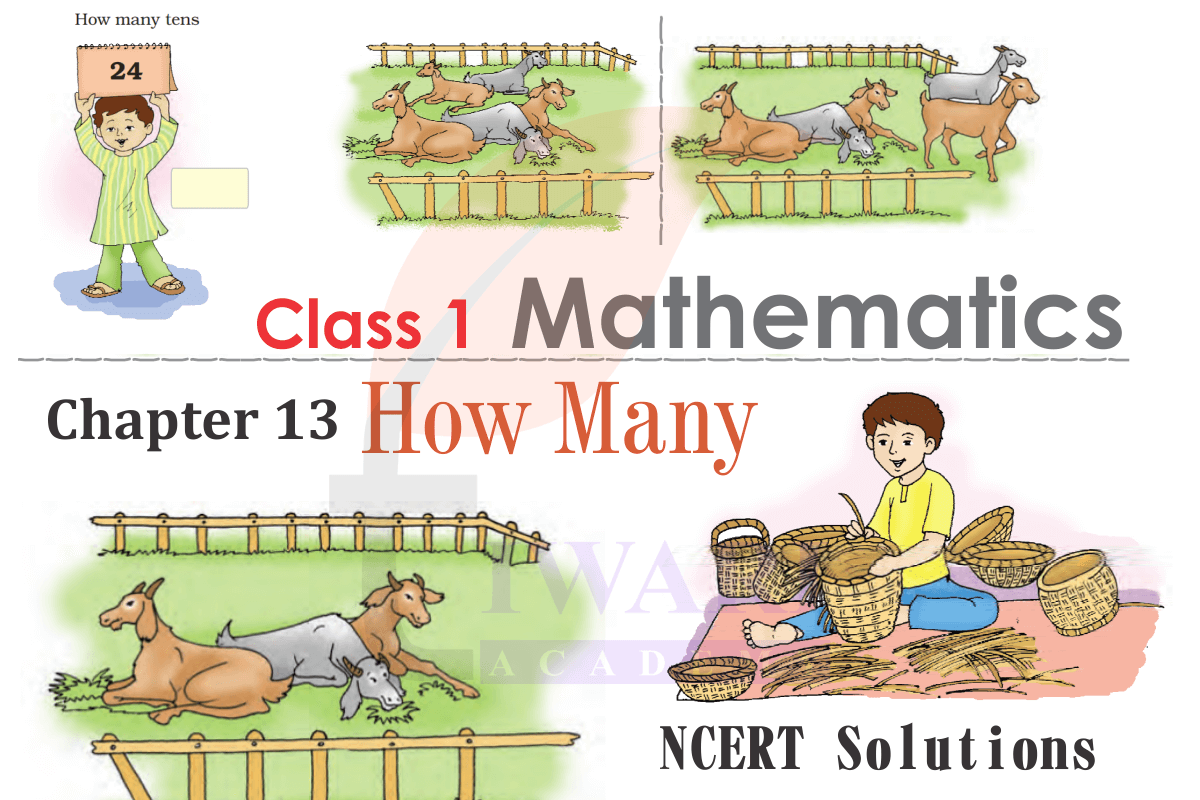
How many
This is a fairly easy and fun chapter about the shapes that you have learned in the previous chapters and find out the answer to the question given with the help of beautiful colored pictures. Then once you we are done with it. Next is to check the picture of Billu weaving the bucket and try to make a story with your imagination about the picture. What do you think the Billu is doing that for? What do you think Billu’s character is?
Working with class 1 mathematics, while accuracy in counting is essential, the chapter may also introduce the idea of estimation, helping students make educated guesses about quantities without counting each item individually. This nurtures their intuitive understanding of numbers and quantities.
Question:
Cost of one banana is 1 rupee, find the cost of 3 bananas.
Answer:
Cost of 1 banana = 1 rupee then,
Cost of 3 bananas = 1 rupee + 1 rupee + 1 rupee
= 3 rupees
Question:
Cost of one apple is 5 rupees find the cost of 4 apples.
Answer:
Cost of one apple = 5 rupees
Cost of 4 apples = 5 rupees + 5 rupees + 5 rupees + 5 rupees
= 20 rupees
To simplify the process of counting larger numbers of objects, students might be introduced to the idea of grouping. For instance, objects could be grouped in tens, making it easier to count large quantities. This method lays the foundation for place value and base-ten counting in higher grades.
To reinforce the concepts learned, students engage in various exercises and activities, ranging from counting objects in a picture, matching groups of objects to the correct number, to solving simple word problems related to quantities.
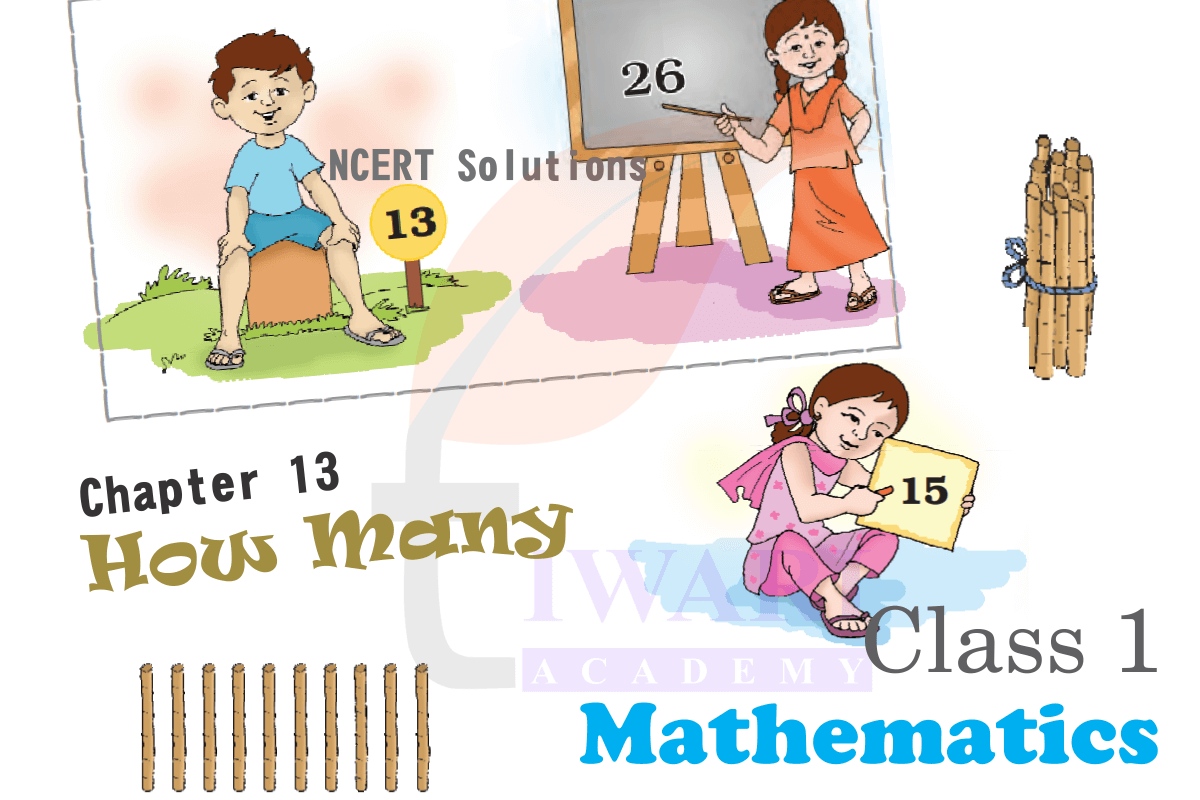
Question:
Find the bigger number 13 and 26.
Answer:
26 is bigger than 13.
Question:
Find the bigger number 52 and 68.
Answer:
68 is bigger than 52.
What does chapter 13 of class 1st math teach children?
Unit 13 is not teaching something new in the chapter, Instead, it is trying to make the children practice what they have learned in previous chapters. Through various types of tests and activities.
Is unit 13 math practice is enough for the exam preparation for class 1st students?
Chapter 13 of class 1st is only to practice previous chapters. However, It is not enough to cover the entire book lessons for exams. So I suggest making the child practice with other methods to check their understanding.
Do you think unit 13 of class 1st is successful in making practice easy for the kids?
The chapter and full of multiple drawings and other things and it is made in such a way that can engage the children for a long time rather than just going through the chapter learning not much. This chapter indeed succeeds in keeping the children attention and making them learn numbers.
